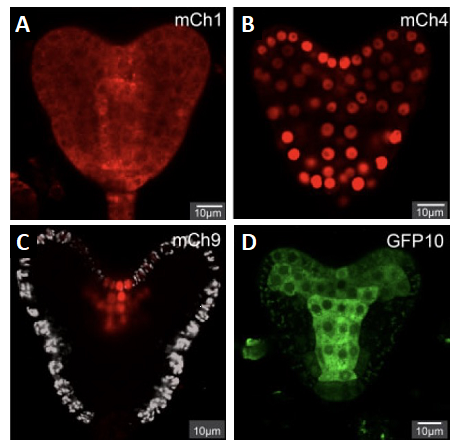A complete set of Arabidopsis reporter lines for ARGONAUTE (AGO) proteins
The Voinnet group (IMPB) describes, in "Plant physiology", a series of transgenic lines reporting the expression patterns of the 10 AGO paralogs of Arabidopsis. Although AGOs are key effectors of RNA silencing, such an enabling tool-set has been crucially missing in the plant field.

In the pan-eukaryotic RNA silencing process, small RNAs including micro-RNAs (miRNAs) and small interfering RNAs (siRNAs) regulate the stability/translation of sequence-complementary mRNAs. sRNAs may also direct transcriptional gene silencing via sequence-specific DNA/histone methylation. Central to this diversity of action are silencing effector proteins known as ARGONAUTEs (AGOs), which, loaded with sRNAs, are guided to target RNA or DNA. Commonly ascribed to “genetic redundancy”, the proliferation and diversification of AGO paralogs in certain organisms (e.g. 28 in C.elegans, 10 in Arabidopsis) attests to a multitude of complex RNA silencing pathways likely operated in a cell type- or developmental stage- specific manner. Tools are thus required to faithfully and non-invasively report the distribution, in space and time, of individual AGOs found in an organism-of-interest, with the making and characterization of so-called “reporter lines” being often a tedious, albeit necessary, endeavor.
Jullien et al. (2022) describe a long-awaited, complete set of AGO-reporter lines in Arabidopsis, and illustrate, by focusing on reproductive organs, how exquisitely specific and often non-overlapping AGO expression patterns likely underpin specialized RNA silencing functions pre- and post-fertilization in a suggested cell-autonomous manner. These AGO reporter lines constitute an enabling tool set to explore the ever-expanding roles of sRNAs in higher plants.
Link to the paper in external page Plant Physiology